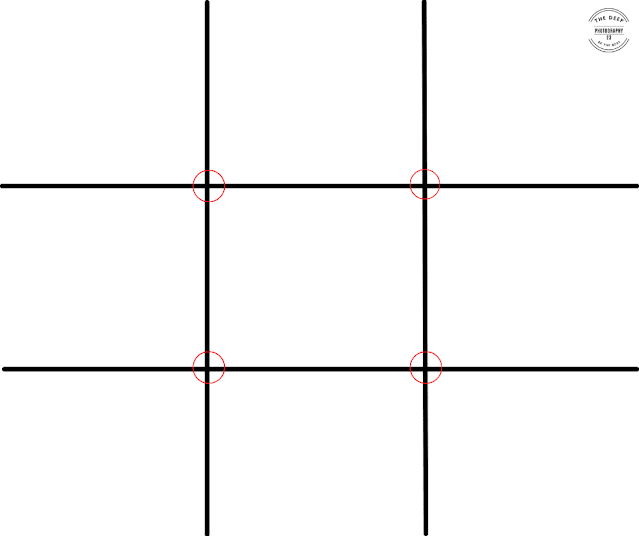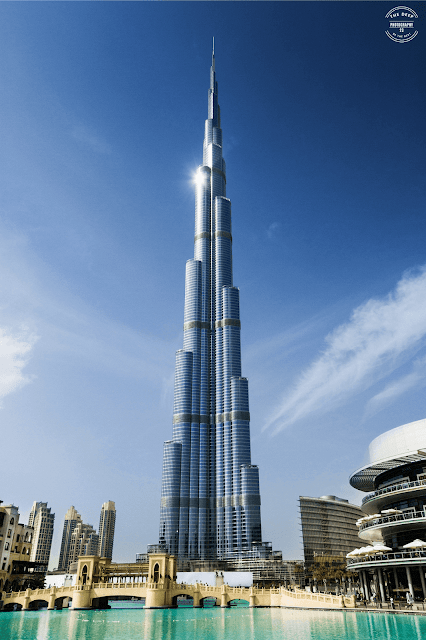The most important rules of composition in photography
Being a professional photographer is not just about the photographic equipment you own or the number of lectures you've attended, but also depends on the effects you've created in your photos, including lighting and how the image is composed.
Even if you own the most expensive and latest technology, your photos will be nothing more than snapshots if you do not know the basics of image composition. Alternatively, you can shoot with a ten-year-old smartphone, and create amazing works of art with good composition. In other words, the composition is what makes the image. But what are the rules to follow to get good composition in photos?
It may seem strange, but the only rule in photography is that there are no rules. However, there are many configuration guidelines in place, which we'll talk about in this article, that can be applied in almost any situation to enhance the impact of a scene.
These tips will help you take more compelling photographs, give them a natural balance, draw attention to important parts of a scene, or direct the viewer's eye through the image.
So, at the end of this tutorial, you'll learn about composition techniques used in great artwork, and you'll be able to create even better images!
Composition in photography
What is the meaning of image composition in photography?
When you take a photograph, you must make some kind of decision about what elements you want to include in the photo, and most importantly how to arrange those elements in your photo.
It's very easy to define the word composition, but it can be difficult to apply it successfully because it's more than just an arrangement of things in your photos, it's what brings meaning to the pictures taken. The ultimate goal of a successful composition is to raise the meaning of the image.
Now let's move on to the basic principles that must be followed to get the right configuration.
Basic rules for composing images in photography
preconception
In the sense of visualizing the image in your mind before pressing the shooting button, when you want to take a picture of a scene, you must first imagine what this image will look like in the end, and how it will express the feeling that you want to convey to the viewer. Will the colors in the scene help convey your idea, or will the concept be best expressed in a shade of gray? Does the scene require sharpness and clarity, or will some mystery create a better feeling? and so on.
Simplicity
35.0mm ƒ/9.0 1/40s ISO 640
Simplicity is one of the best ways to improve your photos. If you are a beginner, it is recommended to look for the simplest possible scenes to shoot. This does not mean that complex or chaotic scenes should be avoided, but it does need to put a lot of effort into shooting. You may have seen a lot of great photos of forests and crowded landscapes, despite their complexity as shown in the image below.
35mm f/8 1/1000s ISO200
It depends on practice, the more pictures you take, the easier it will be to shoot these scenes, but as a beginner, you should focus only on shooting simple scenes.
Going back to composition in photography, simplicity is key. When I find a scene that catches my eye, I look for what I can remove in that scene to make the image appear stronger. For example, I leave out cheerful flowers to create a bleak image.
In other words, simplicity is to make your message clear by cutting out details that don't express what you want to convey to the viewer through your photo.
visual balance
One of the most important decisions to make when shooting is whether you want to balance or unbalance your image, in other words, will the image tilt to the right or left to create a sense of tension, or will it have an equal balance to appear more stable and more harmonious.
Opinions differ on this point. Some photographers prefer an unbalanced or tense image, because it conveys the idea more effectively, while others prefer a balanced image that is more satisfying.
In a conclusion:
- The balanced images are sound, steady, and calm.
70mm f/5.6 1/160s ISO100
- The unbalanced images are dramatic, tense, and dynamic.
70mm f/5.6 1/160s ISO100
Giving image elements breathing space
When you're shooting, you have to leave some breathing space between the elements of your photo, so you don't create some noise at the image level, and the message you want to convey is lost.
For example, if you are photographing a mountain, you should look for a good shooting angle, allowing the mountain and the tree to appear together in the image, and not part of the mountain covered by the tree.
35mm f/16 1/80s ISO100
To create the effect to be conveyed to the viewer, sometimes the photographer can move the components to get a better composition, and other times he has to move to a position that provides him with the best composition.
Giving importance to the aspects of the image:
42mm f/7.1 1/100s ISO100
The sides or edges of an image are just as important as the center. In some scenes, they may be more important than the center. A slight distraction near the edge of the frame has a much greater effect than the same distraction near the center.
keep moving
To take good photographs you need to move, walk or run if necessary, experiment with different angles, and get a suitable composition, good lighting, and more.
The photographer sometimes tends to rush with the change of light, jumping from one point to another to achieve his goal, but there are some exceptions, for example, photographing wildlife, arranging a studio scene, or shooting a macro, in these cases it may not move much but, certainly also needs this type of photography Lots of effort.
rule of thirds
The rule of thirds is one of the basic principles that are often used universally in the composition of the image, and the reason for this; Because its use is very simple, and it makes a big difference in the final image look.
The rule of thirds refers to dividing your image into three horizontal sections, and three vertical sections, which means you should have two lines From top to bottom, and two lines from left to right, as shown in this figure:
This rule states, if you place the main subject of your photo in the top, bottom, left, or right sections of the grid, you'll make a perfect picture.
Or you can place the important elements of your scene along those lines, or at the points where they meet.
Who invented the rule of thirds? Believe it or not, it was first talked about in 1797 Of course, it wasn't about photography, but about painting - the principles were the same, at that time, people were debating the balance between warm and cool colors, and how much painting each element should occupy, they said that the lower third should consist of earth and water, and the other two thirds should remain for air and sky, hence the idea of the name.
In this picture, the bottom third of the earth, the remaining two-thirds of the sky, and most importantly the tree, which is the main subject of the picture, lies on one of the lines. This means that this image has successfully applied the rule of thirds.
35mm f/8 1/160s ISO100
You don't have to follow the same methodology as this photo, but you should follow the rule in general to get a good composition for your photo.
When photographing a person, place the eye closest to the camera on one of the intersecting points.
85mm f/7.1 1/160s ISO100
There are many examples of this rule being used, which we will cover in another article.
Take advantage of the leading fonts and shapes
One of the artistic elements that our eyes naturally draw is lines and shapes. You can use this to your advantage, by guiding the viewer's eyes with shapes.
Roads, bridges, and even paths are good for this type of composition, because they have lines that narrow towards the far end, leading the viewer's eye to the main places in the image, such as lines of buildings that lead to the sky, or a path that leads to a person standing at the end of it...etc.
35mm f/16 1/160s ISO200
As you practice this technique, you will find that many shapes and lines are around you, you will often find traditional and clearly defined shapes, such as windows and doors, and you can also find complex shapes.
Feel free to move around and change the frame, to find these interesting shapes and lines.
Repetition
Repetition in photographic composition directs the viewer's eye to your subject in the same way as the main lines we talked about in the previous paragraph, so you'll often find yourself combining these two techniques when creating an image.
In this image, to draw attention to the main theme of the reflection of sunlight on glass, the rule of repetition is used.
36mm f/13 1/200s ISO100
Color, shape, parts of objects or even whole objects can be repeated into a powerful composition.
fill the frame
The frame refers to the sides of the image or the edges of the viewfinder. When shooting to fill the frame, you must approach the subject, either by moving towards it or zooming in with the viewfinder.
35mm f/2.8 1/250s ISO400
Filling the frame allows you to focus on your subjects, such as facial expressions and some details that might not be noticeable.
Cropping while editing the photo later also makes your photo look like a close-up, but keep in mind that you risk significantly lowering the resolution and quality of the photo.
frame within frame
The simplified meaning of frame within a frame is when an element in an image is used to frame the main subject, and the goal is to lead the viewer's eye toward that subject.
22mm f/6.3 1/125s ISO320
And the frame in this case is not just about doors and windows, but anything you want; Cave, Leaves, Your Hands...etc.
35mm f/22 ISO100
Don't cut the limbs
Make sure you don't cut any part of the person/animal you're photographing, cutting off your cat's tail, dog's ear or, part of a girl's head will not only spoil the photo but may distract from what the viewer should be looking at.
Of course, there are times when this rule can be ignored, but most of the time, pay attention to it.
The search for symmetry
Symmetry is everywhere, and most human-made objects are the same. Cars, planes, boats, ships, homes, buildings, and many of the products we use every day have consistency. why? Because the human brain is so closely associated with symmetry, we associate it closely with beauty.
Make the background simple
There will be countless times where you want to isolate your subject and get rid of the background, especially if it's noisy, distracting from the subject.
The most common technique is background blur as shown in the image below:
If you are a fan of blurry backgrounds, you can visit our article that talks about aperture and its relationship to depth of field, where you will find the right way to photograph your subject with a blurry background. Now let's go back to the composition of the image.
Image blur isn't the only way to isolate your subject and make the background simple, consider things like a clear sky, a gray day, or perhaps a repeating pattern like a brick wall, an open space, and more.
36mm f/2 1/800s ISO100
one point of interest
This technique is one of the simplest forms of composition in photography. A single element can add interest to a boring photo. This element is usually small or contrasts with the rest of the photo. You can choose to place it in the middle, or on the side of the frame as in the image below
The image will be more dynamic if you follow the rule of thirds when framing your point. As in the picture above, where the bird was placed in one of the lines' intersection points.
depth
Since photography is a 2D medium, we have to choose your composition carefully to convey the sense of depth that was in the actual scene, you can create depth in the image by including objects in the foreground, middle ground, and background, as shown in this image, where the rocks are in the foreground and The sea is in the middle, with the sun in the background:
Lens 17.0mm, Aperture ƒ/8.0, Shutter speed 1s, ISO 500
Another useful technique in the composition is interlacing, where you partially obscure one element by another. The human eye naturally recognizes these layers and mentally separates them, creating an image with greater depth.
Leave a blank space around your topic
Leaving a blank space around your subject makes the viewer's eye focus on the subject only.
70mm f/14 1/125s ISO100
Balance the elements of the image
When you have a strong subject in the foreground, it is helpful to have a smaller subject in the background to balance the foreground element. As shown in this photograph, the Paris Tower is used in the background, balancing the newlyweds in the foreground.
35mm f/2.5 1/640s ISO200
When you balance the elements in an image, you create interest in the viewer.
This may seem to contradict my previous advice on composition photography about leaving blank space around your subject, but this is the advantage of knowing many of the rules of composition. To try out many of them, choose the one that best suits your scene.
It is up to you, as the photographer, to judge which composition rule will work best with your image.
- Triangles
Since the triangles create dynamic tension within the image, they make the composition interesting. We are used to the stability of vertical and horizontal lines. The diagonal lines of the triangles resemble a large arrow leading the eye.
Of course, this does not mean that you have to run for triangular objects to photograph to apply this photography composition tip. Triangles can also be included by choosing the appropriate angle for shooting.
35mm f/9 30s ISO640
Breaking the rules of image composition
Configuration rules or techniques are just guidelines and starting points, sometimes you might want to break out of the traditional mold, and try something different, in which case you can simply break the rules.
Don't let the rules of composition make you feel trapped in a box you can't get out of. Because the photographer, or the artist in general, means having the freedom to create anything they want. So get creative, and push yourself to create new things.





























Comments
Post a Comment
We are waiting for your comments and inquiries